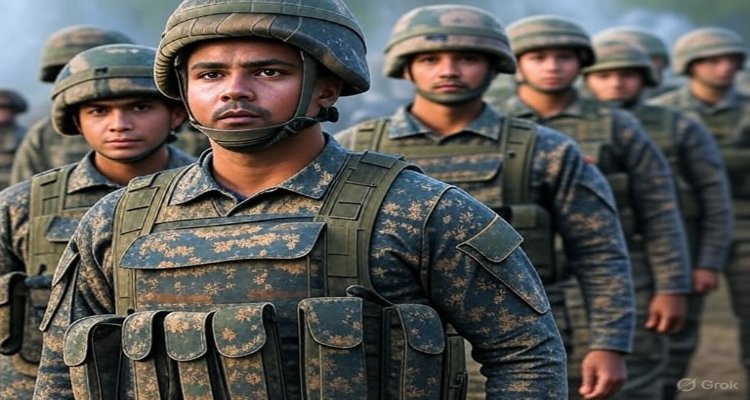“India Joins Russia’s ‘Zapad 2025’ Military Exercise to Boost Defense Cooperation”
India sends a 65-member contingent to Russia for Exercise Zapad 2025, strengthening military cooperation, interoperability, and joint combat readiness.
India Deepens Military Ties with Russia Through Exercise Zapad 2025
In a move signaling both strategic commitment and global cooperation, India has dispatched a 65-member contingent of its armed forces to Russia to participate in Exercise Zapad 2025. The multinational military drill will take place from September 10 to 16 at the Mulino Training Ground in Nizhniy, bringing together soldiers from across the world to sharpen their skills in modern warfare and counter-terrorism.
The Indian delegation includes 57 Indian Army personnel, seven from the Indian Air Force, and one from the Indian Navy. The Army contingent is led by a battalion of the Kumaon Regiment, supported by troops from multiple arms and services, reflecting India’s integrated approach to multinational training.
Setting the Context: A Tradition of Strategic Exercises
India’s participation in foreign military exercises is not new. Over the past decade, it has actively engaged in multilateral drills with key partners including the United States, Japan, Australia, and members of the SCO (Shanghai Cooperation Organisation).
Zapad, which translates to “West” in Russian, is one of Moscow’s largest military drills, designed to test combat readiness, coordination, and the use of emerging technologies. Traditionally involving Russian and allied forces, the exercise has expanded to include global partners like India, underscoring its growing significance in defense diplomacy.
What Makes Zapad 2025 Important
At its core, the exercise aims to enhance military cooperation, improve interoperability, and provide a platform for tactical knowledge exchange. Over the course of a week, participating troops will focus on:
- Company-level joint operations in open and plain terrains.
- Counter-terrorism drills, reflecting real-world asymmetric threats.
- Special arms training, honing skills in mobility, firepower, and coordination.
- Tactical planning and drills that integrate infantry, air, and mechanized support.
By operating side by side, India and its partners can test strategies, experiment with new doctrines, and adapt to the challenges of modern conflict in a multinational environment.
Expert Voices: Why This Matters
Military analysts view India’s involvement as both practical and symbolic.
“Zapad provides India with a unique opportunity to engage with Russian forces in a structured environment, testing interoperability in realistic battlefield scenarios,” says Lt. Gen. (Retd.) Harpal Singh, a defense strategist based in New Delhi. “It’s not just about combat drills—it’s about fostering trust and learning how different militaries think, plan, and operate.”
Others note the geopolitical undertones. While India maintains deep defense ties with Russia, it also balances relationships with the United States and Western allies. Participation in Zapad demonstrates India’s effort to diversify partnerships without aligning exclusively with one bloc.
Implications: Strengthening Defense Diplomacy
The benefits of participation extend beyond battlefield maneuvers:
Operational Readiness – Joint training in counter-terrorism and conventional warfare enhances India’s ability to respond in real conflicts.
Technology Integration – Exposure to emerging defense technologies and multinational tactics provides insights valuable for India’s modernization drive.
Diplomatic Signaling – Active engagement reflects India’s willingness to act as a bridge between global powers, particularly at a time of shifting geopolitical alignments.
Military Camaraderie – Personal bonds forged during joint drills often translate into smoother cooperation during real-world missions, including peacekeeping and disaster relief.
Looking Ahead
As Exercise Zapad 2025 unfolds, it will serve as a litmus test of India’s adaptability in multinational combat environments. More importantly, it reinforces the enduring defense partnership between New Delhi and Moscow, a relationship that has weathered decades of global realignments.
With security challenges ranging from terrorism to great-power competition, India’s participation reflects not only a quest for preparedness but also its aspiration to remain a key player in the evolving global defense architecture.
Conclusion
By joining Exercise Zapad 2025, India is sending a clear message: its armed forces are ready to collaborate, innovate, and operate in a multinational, high-stakes environment. Beyond tactics and drills, the exercise embodies the spirit of mutual trust and strategic cooperation—values that will shape India’s defense diplomacy in the years to come.
Disclaimer: This article is for informational and journalistic purposes only. It does not represent official policy positions of the Indian Armed Forces or the Government of India.











